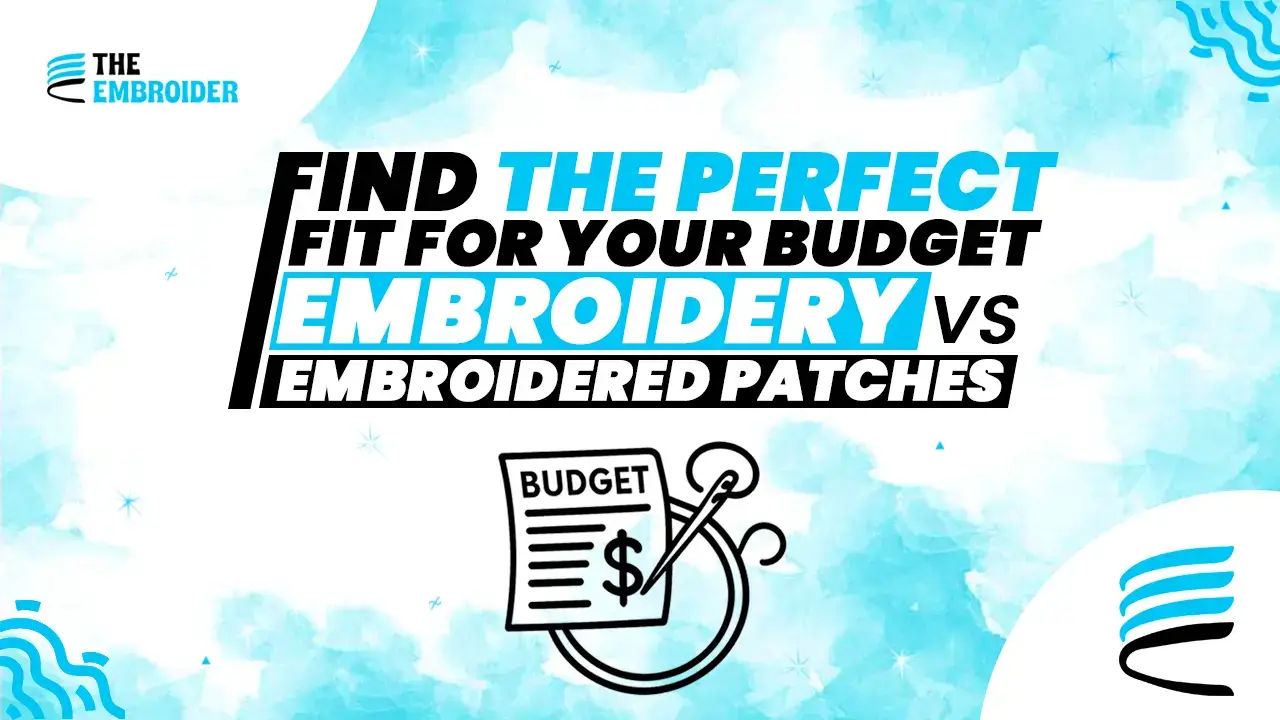When you’re customizing apparel or branding merchandise, choosing between embroidery digitizing vs embroidered patches comes down to cost, flexibility, and durability. In this post, I break down when direct embroidery makes sense and when patches win the day.
What Is Direct Embroidery?
Direct embroidery means stitching your design right onto the fabric, shirts, jackets, bags, etc. The threads become part of the surface, giving you a seamless, integrated look.
Pros of Direct Embroidery
- It’s durable and long-lasting when done well.
- The design won’t peel or shift, since it’s sewn into the fabric.
- Ideal for simple branding where permanence is desired.
Cons
- Once it’s stitched, you can’t remove or reuse it.
- Often more costly, especially for complex designs or tricky fabrics.
What Are Embroidered Patches?
Instead of stitching directly, the design is made on a separate patch and then applied (sewn, ironed, Velcro, etc.). You can think of patches as modular branding elements.
Pros of Embroidered Patches
- Flexibility: You can move them between garments.
- Cost-effective for bulk orders.
- Good durability, quality stitched patches resist wear. (Embroidered patches often retain their thread strength and resist fading over time). Source: Artex Group
Cons
- Some patches might not adhere well to fabrics like leather or canvas without special backing.
- If patches are distributed as promotional items, some recipients may never use them.
Which Option Suits Your Budget Best?
Cost Over Time
At first, patches may seem like extra work (you need to attach them), but they often cost less. For example, direct embroidery can run $3–$5 per piece, while patches can cost significantly less when made in bulk. Source: The Studio
Flexibility & Reuse
Because patches aren’t permanent, you can reapply them to new garments. This reuse factor often tips the balance in favor of patches when uniforms or items change over time.
Design Complexity
Direct embroidery can lose detail when scaled small. Patches let you refine the design separately before application. But if your design is simple and bold, direct stitching may still look cleaner.
Real Example from Our Work
We had a client who needed branding on both polo shirts and caps. Rather than embroidering each item separately (which would cost more and lose flexibility), we created patches for their logos. We then applied them where needed. When uniforms changed next season, we just moved the patches. That decision saved them money and time, while maintaining consistent branding.
When to Choose Which – A Quick Decision Guide
| Goal / Constraint | Best Option |
| Permanent, seamless look | Direct embroidery |
| Reusable, cost-efficient | Embroidered patches |
| Complex detail or color | Patch (refine before stitching) |
| Simple branding, few items | Direct embroidery |
Also, evaluating your fabric matters. Some fabrics are easier for stitching; others need stabilizers or a backing that patches make easier to manage.
Final Thought
Choosing between embroidery and embroidered patches isn’t just about budget — it’s about flexibility, purpose, and long-term vision. If you want a permanent, high-end finish, direct embroidery delivers timeless elegance. But if versatility, reusability, and smart spending matter most, patches are your best ally. Both methods tell your brand’s story — it’s simply a matter of how you want it to unfold.
Need expert help deciding? Our team at The Embroider can guide you through every step from digitizing to crafting patches that bring your vision to life.
FAQs
Q1. Does direct embroidery always look better?
Not necessarily. For smaller or intricate designs, patches give you more control to perfect details before stitching.
Q2. Can embroidered patches peel or come off?
If not applied well, yes. But with proper backing or stitching reinforcement, good patches last a long time.
Q3. Which is better for uniforms that change frequently?
Patches win. You can reuse them on new garments instead of redoing embroidery every time.
Q4. Does patch thickness matter?
Yes. Thicker patches add bulk on lighter fabrics. For soft garments, opt for thinner patch backings or flatter stitch types.
Q5. How many washes can embroidered patches survive?
High-quality iron-on patches typically stay firmly attached for around 25 washes if applied correctly and cared for properly.
Q6. How durable are custom patches compared to woven ones?
Custom embroidered patches are known for their strength; they resist fraying and fading with good thread and backing. In many cases, they offer durability that rivals woven variants, especially when used on garments that undergo regular wear.

